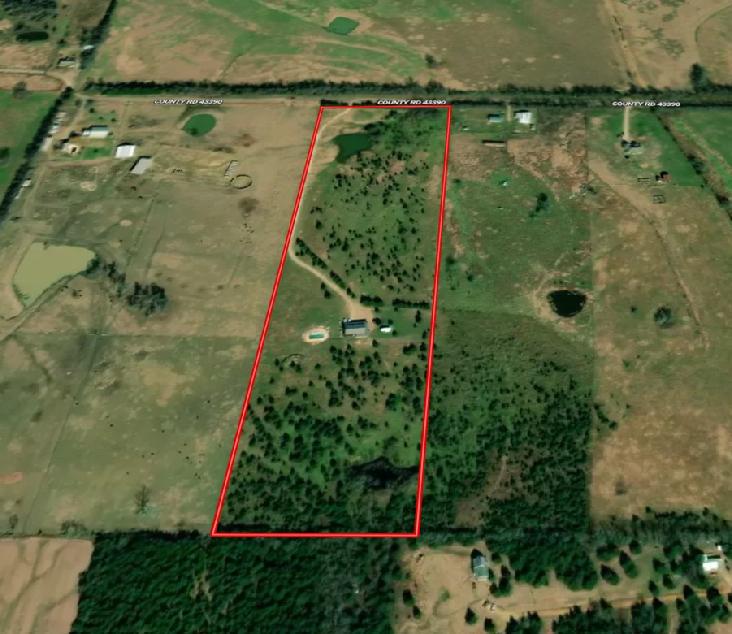
Determining the Value of Your Land in Texas
If you’re looking to sell land fast in Texas, one of the biggest questions on your mind is likely “how much is my property worth?” Accurately pricing your land is crucial – list it too high and it may sit on the market indefinitely, but price it too low and you’re leaving money on the table.
The traditional real estate appraisal process relies on three main approaches to estimate property values. Understanding these methods and the key factors that influence land valuation will help ensure you get the best possible price when trying to sell your Texas land.
The Three Approaches to Property Valuation
Income Approach
The income approach looks at the potential income a property can generate and calculates its value based on that projected revenue stream. For income-producing properties like rental homes, offices or retail spaces, an appraiser estimates the annual net operating income and applies a capitalization rate to arrive at the property’s value.
While the income approach is most applicable to developed, revenue-generating properties, it can occasionally be used for valuing land as well. If the parcel has existing leases or the potential for future ground leases, those income flows could be capitalized to indicate its value.
Cost Approach
The cost approach in property appraisal involves estimating the current cost to recreate the property from scratch, including both the building and the land. For the building, the appraiser calculates the cost of labor and materials needed to construct an equivalent new structure, taking into account location factors like being in Texas. This replacement cost is then depreciated based on the property’s age and condition to arrive at a depreciated value for the building itself. For the land, the appraiser estimates what it would currently cost to acquire and develop the land for its highest and best use, considering factors like size, topography, demolition requirements, utility extension costs, and any existing site improvements like grading or landscaping. The depreciated value of the building and the estimated land cost are combined to give an overall property value using the cost approach method.
Sales Comparison Approach
The sales comparison method looks at recent sales of similar, comparable properties in the same geographic area of Texas. By analyzing qualities like size, condition, location and amenities, adjustments are made to the sold prices to accurately reflect differences between the comparable properties and the subject property being valued.
The sales comparison approach is widely used because it directly reflects the prices buyers are willing to pay for real estate in Texas based on the principle of substitution – a buyer will pursue the cheapest alternative that meets their needs and desires. It’s the most common and reliable approach for valuing residential properties and vacant land parcels in Texas when adequate comparable sales exist.
For vacant land in Texas, the sales comparison method is typically viewed as the most appropriate and reliable valuation technique by appraisers when good comparable data is available. According to California’s Property Tax Rule 4, “When reliable market data are available with respect to a given real property, the preferred method of valuation is by reference to sales prices.”
However, a number of key factors beyond just recent comparable sales come into play when evaluating a land parcel’s worth in the state.

Key Factors Influencing Land Value in Texas
Zoning and Permitted Uses One of the biggest drivers of a property’s value in Texas is its approved zoning classification and the types of uses allowed. A parcel zoned for commercial development like offices or retail will generally be worth more than an equivalent residential lot. Zoning also impacts the size and density of any future development in Texas, which affects its income potential.
Within each broad zoning category, there can also be a range of more specialized categories that increase or decrease a property’s value depending on the buyer’s intended use. For example, a commercially-zoned lot approved for a high-rise development would be valued much differently than a low-rise commercial parcel in Texas.
Land should be valued based on its “highest and best use” – the most profitable use that is legally permissible, physically possible, and financially feasible. Appraisers have to analyze the optimal, maximally productive use in determining a property’s value.
Location and Access As the familiar real estate adage goes, the three most important factors are “location, location, location.” Two otherwise identical vacant lots in Texas could have drastically different values based simply on their respective locations.
Centrality and proximity to amenities, economic hubs, transportation corridors and other desirable locations positively impact land values in the state. But less tangible elements like the character, safety and perceived desirability of a neighborhood or area also play a major role in pricing.
Ease of access and exposure are also highly valued. Properties with good road visibility and access will command higher prices than the equivalent parcel tucked away on a quiet side street. Similarly, land with frontage on high-traffic arteries is more valuable.
Site Characteristics and Development
Developers and builders focus heavily on a parcel’s physical characteristics and developability when determining its value. Topography, soil quality, environmental factors, potential for flooding or other hazards, and required site preparation all impact the site’s construction costs and development potential.
Parcels with relatively flat, rectangular shapes and few physical impediments that are “shovel ready” with utilities, drainage and other infrastructure already in place demand a premium price over difficult parcels requiring extensive grading, remediation or demolition before building can occur.
Demand for That Type of Land In markets with high demand, low inventory and many willing buyers chasing few available properties, sellers have more leverage to demand top prices. But in areas with an oversupply of comparable land parcels, buyers can negotiate harder to find bargains.
In Texas’ major metro areas like Houston, Dallas, Austin and San Antonio where rapid development is occurring, demand for land remains robust across sectors like residential, commercial, and industrial. But in smaller markets or rural areas, purchasers may have more negotiating power if trying to sell land fast.
Surrounding Development What is surrounding the land parcel, both existing and planned, also plays a role. Parcels surrounded by complementary development like residential neighborhoods, retail centers, office complexes or infrastructure could be more valuable. However, nearby noxious uses, busy roadways or other detractors like high-tension power lines could suppress pricing.
In addition to sales comparisons, appraisers and buyers analyze these different influencing factors using their judgment and local market expertise to determine the most reasonable and supportable value for vacant land in Texas.
Other Valuation Methods for Land While the sales comparison approach is widely considered the most reliable technique for valuing vacant or raw land when adequate data exists, there are other potential methods appraisers may need to utilize:
Income Capitalization Method When comparable sales data is lacking, Texas appraisers can value land using an income capitalization approach as outlined in the state’s Property Tax Rules. This involves estimating the potential future income stream from the land based on its highest and best use, then capitalizing that income into a present value using an appropriate capitalization rate.
The capitalization rate accounts for both the required yield/return on investment as well as the effective property tax rate. No provision for recapture is required since land theoretically does not waste away over time.
Allocation/Extraction Methods In some cases, the land’s value may be calculated by allocating a portion of the total property value just to the site based on general land-to-property value ratios from the area. Or the depreciated improvement value may be extracted from the total to leave just the residual land value.
Other Considerations When Trying to Sell Land Fast in Texas
Holding Costs Sellers need to factor in ongoing holding costs like annual property taxes, association fees if applicable, maintenance, and debt service if the land is mortgaged. While harder to quantify, there is also an “opportunity cost” of holding the idle asset instead of selling quickly and reinvesting that capital elsewhere.
In addition to property-specific elements, a few other important points should be weighed when trying to sell vacant land in the state of Texas.
Time on Market
The average marketing period will affect pricing strategies. Properties priced at market rates may still require 3-6 months or more to sell in many Texas markets, while premium prices could mean 12+ months on the market before finding the right buyer. If trying to sell land fast, pricing becomes even more critical.
Seller Motivations Understanding the seller’s motivations and overall goals can provide context around pricing. An investor simply looking to get out of a non-performing asset may accept a lower price for a quicker sale to sell their land fast. But a land speculator looking to maximize returns may hold out for the highest possible price, regardless of the holding period.
Ultimately, an owner selling vacant land in Texas has to balance their disposition goals, assumptions about the future, holding costs, available alternatives, and what the market is willing to bear. Working with an experienced land professional to thoroughly evaluate comparables and all value influences is critical to negotiating the optimal transaction price, whether trying to sell land fast or not.
Call PREAM Lands at (469) 840-4449 or send us a message for more information on how to determine the value of your land in Texas!

